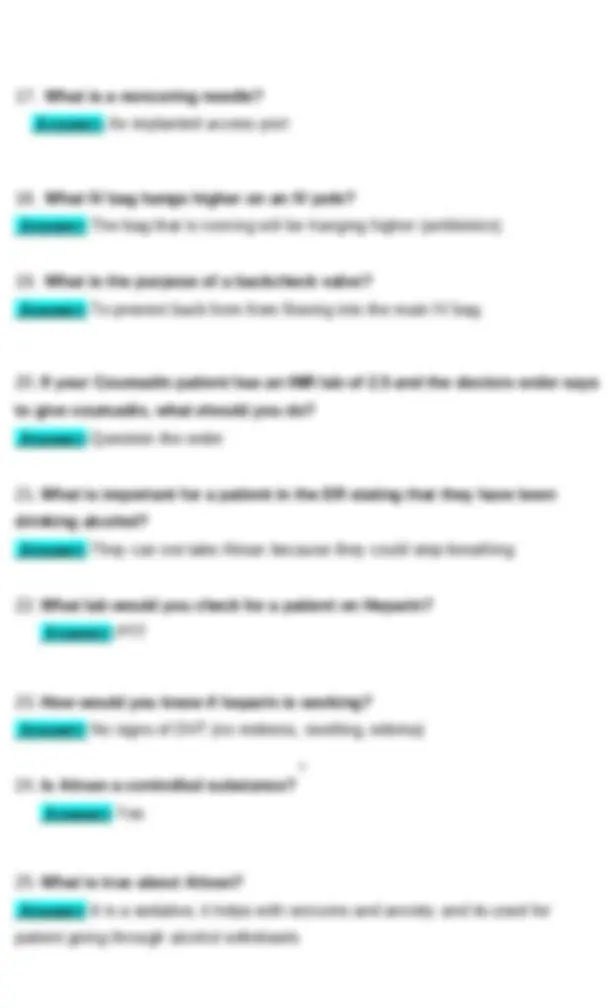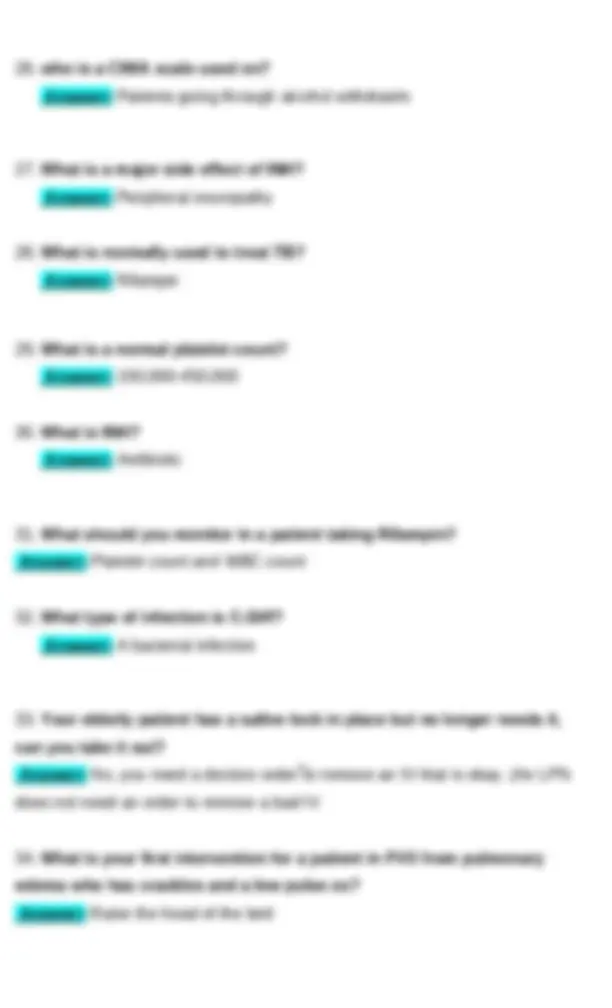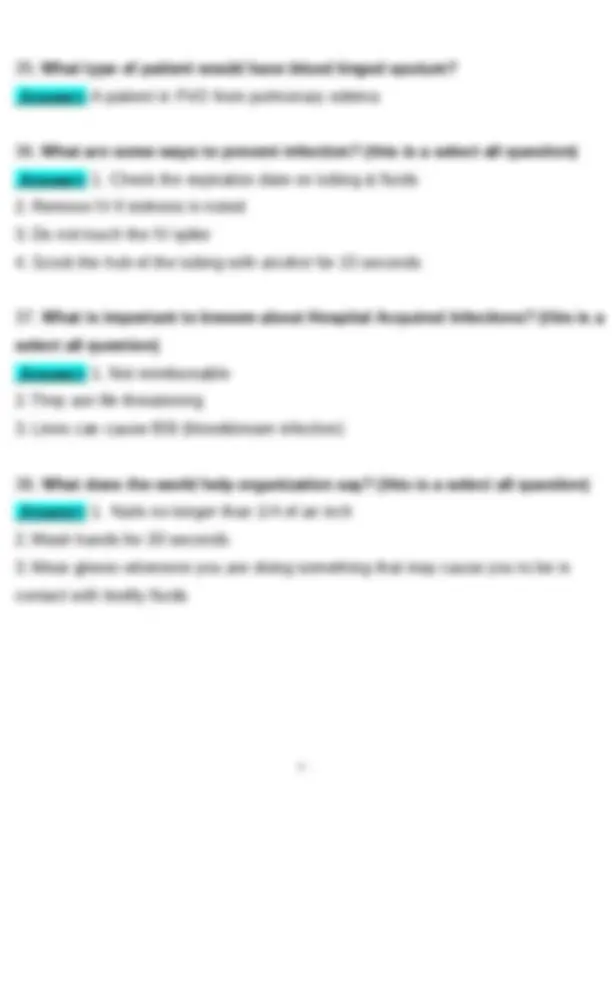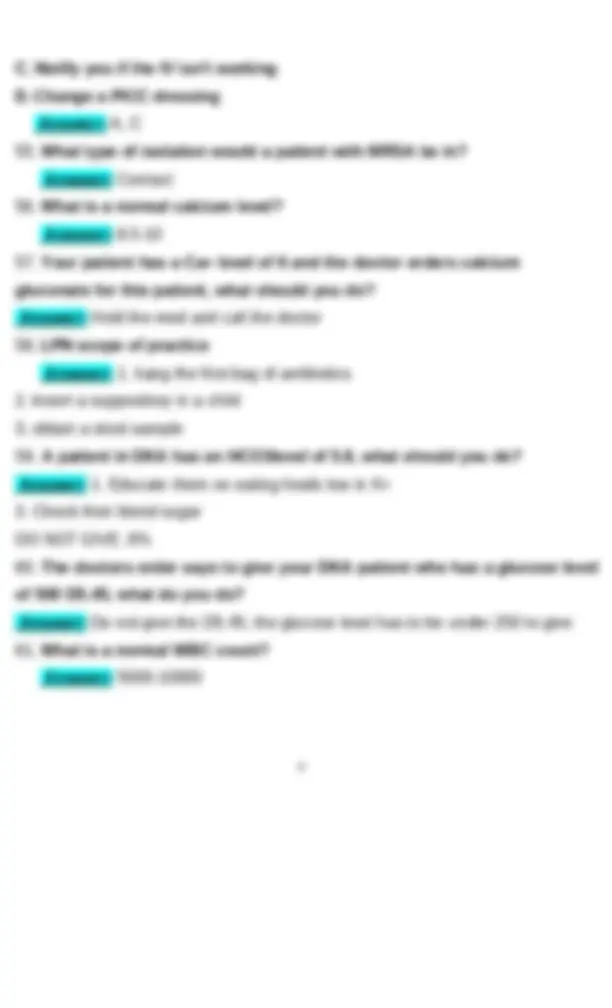






Study with the several resources on Docsity

Earn points by helping other students or get them with a premium plan


Prepare for your exams
Study with the several resources on Docsity

Earn points to download
Earn points by helping other students or get them with a premium plan
Community
Ask the community for help and clear up your study doubts
Discover the best universities in your country according to Docsity users
Free resources
Download our free guides on studying techniques, anxiety management strategies, and thesis advice from Docsity tutors
Prepare with confidence for your NUR 172 Final Exam—designed specifically for the Hondros College Intravenous Therapy course. This comprehensive study guide includes everything you need: detailed key concepts (6 medication rights, catheter rules, legal/ethical terms), scope-of-practice rules, PIV insertion/removal steps, and real practice questions with answers. Ideal for LPNs studying at Hondros College (Ohio, Indiana, Michigan campuses). Boost your score and reduce test anxiety with this targeted review. Perfect for mid-term and final prep—get ready to ace your IV Therapy exam! NUR172, NUR 172, Hondros College, IV Therapy, Intravenous Therapy, LPN review, NCLEX PN prep, nursing exam, study guide, practice questions, nursing school, exam prep, PIV insertion, IV therapy course
Typology: Exams
1 / 8

This page cannot be seen from the preview
Don't miss anything!





1 / 4
2 / 4
4 / 4
5 / 4
7 / 4
8 / 4 C. Notify you if the IV isn't working D. Change a PICC dressing Answer> A, C